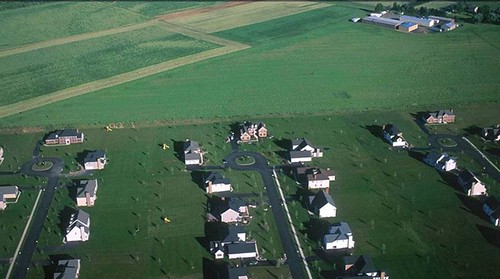Now the NY Times joins the chorus: "life on the edges of suburbia is beginning to feel untenable"

Posted June 25, 2008 at 12:42PM
Peter Goodman writes in today's New York Times:
"Suddenly, the economics of American suburban life are under assault as skyrocketing energy prices inflate the costs of reaching, heating and cooling homes on the distant edges of metropolitan areas . . .
"Life on the edges of suburbia is beginning to feel untenable. [Phil] Boyle and his wife must drive nearly an hour to their jobs in the high-tech corridor of southern Denver. With gasoline at more than $4 a gallon, Mr. Boyle recently paid $121 to fill his pickup truck with diesel fuel. In March, the last time he filled his propane tank to heat his spacious house, he paid $566, more than twice the price of 5 years ago . . .“'Living closer in, in a smaller space, where you don’t have that commute,' he said. 'It’s definitely something we talk about. Before it was ‘we spend too much time driving.’ Now, it’s ‘we spend too much time and money driving.’ ”
"Across the nation, the realization is taking hold that rising energy prices are less a momentary blip than a change with lasting consequences. The shift to costlier fuel is threatening to slow the decades-old migration away from cities, while exacerbating the housing downturn by diminishing the appeal of larger homes set far from urban jobs.
"In Atlanta, Philadelphia, San Francisco and Minneapolis, homes beyond the urban core have been falling in value faster than those within, according to an analysis by Moody’s Economy.com.
"In Denver, housing prices in the urban core rose steadily from 2003 until late last year compared with previous years, before dipping nearly 5 percent in the last three months of last year, according to Economy.com. But house prices in the suburbs began falling earlier, in the middle of 2006, and then accelerated, dropping by 7 percent during the last three months of the year from a year earlier.
"Many factors have propelled the unraveling of American real estate, from the mortgage crisis to a staggering excess of home construction, making it hard to pinpoint the impact of any single force. But economists and real estate agents are growing convinced that the rising cost of energy is now a primary factor pushing home prices down in the suburbs, particularly in the outer rings . . . "
Read the entire article here.
